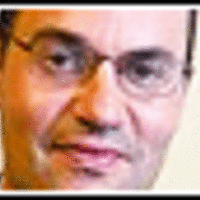Raising revenue at elite public universities
Loading...
[Editor's note: This post has been changed and updated.]
As a professor at a leading public university, I have a strong stake in helping UCLA identify new sources of revenue. While we can chant "China, China, China", I believe in a diversified revenue stream. Due to political pressure, public universities will not be able to continue to sharply increase tuition. Federal grant dollars from NSF and NIH will soon start to decline. How will $ continue to flow to Universities?
Schools such as Harvard and Stanford have figured out that if you offer young people an excellent education that some of them will be successful and in later life will give back large amounts of $ because they remember the role that the university played in shaping their life. Other Alumni will give big bucks because they want their kids to have a shot at "legacy admissions". Regardless of the motivation for giving, a school's stock of past graduates represents an excellent source of donations.
Public universities such as UCLA have been slow to tap into their graduates to make "the ask". Many of these graduates took for granted that the Great California would provide them with a "free, high quality education" and they are aware that their children will not receive extra consideration for admissions even if they make a big gift.
The main point of this blog post is to ask a "what if". Could UCLA's endowment grow more quickly if we enroll more 4 year students? If I'm reading this table correctly, UCLA admits roughly 3,000 transfer students a year. Many of these students will stay at UCLA for 2 years and earn a degree and leave.
Suppose that these same students spend all 4 undergraduate years in Westwood enrolled at UCLA. I think that future donations to UCLA would be much higher. Loyalty takes time to build. If you spend 4 years in wonderful Westwood, learning and being part of the social network -- you will have stronger roots to the community. Given the strength of UCLA's education, the same students would also learn more at UCLA than if they spend 2 years at one college and then transfer here. I realize that there are always exceptions to the rule.
I also recognize that UCLA has had terrific transfer students and will continue to have excellent transfer students. The economic decision here is what is the "optimal number" of transfer students?
I have received some angry emails from students concerning my original posting. I would like to apologize to them. It was not my intent to be offensive or rude. My goal was to stimulate a debate.
But, returning to fund raising consider the following facts; In 2011, UCLA's endowment stands at 1.3 billion dollars or at 2.6 billion depending on how you count. USC charges a higher tuition and has an endowment of roughly 3.5 billion but is in the middle of an ambitious capital campaign that will increase its endowment to roughly 7 to 8 billion dollars. For those who are members of the UCLA Bruin community, what is your solution for how to maintain and produce excellence?
UPDATE: I was not aware that the California Master Plan requires that the UCs reserve a significant number of places for Community College students. This Master Plan has costs and benefits and it should be debated.






